Tyan Transport HX FT65T-B8030 Internal Hardware Overview
Opening the side of the system, we get a good view of the layout. Drives are near the front of the server (right) and the motherboard with I/O is in the rear (left.) We are going to start from the front and move back through the server.
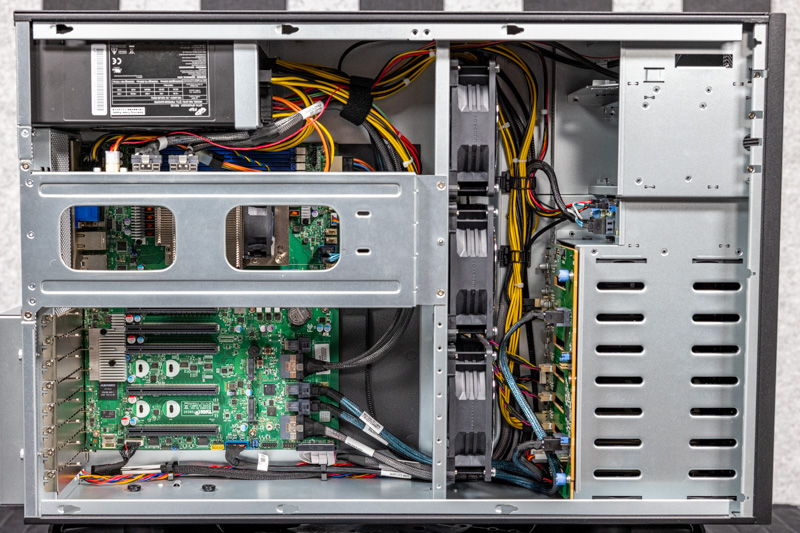
Starting with the 3.5″ bays, we have a backplane that supports SFF-8643 connectivity. Each of these two high-density connectors can support SATA or SAS, but by default they are supplying SATA via the server’s onboard ports.
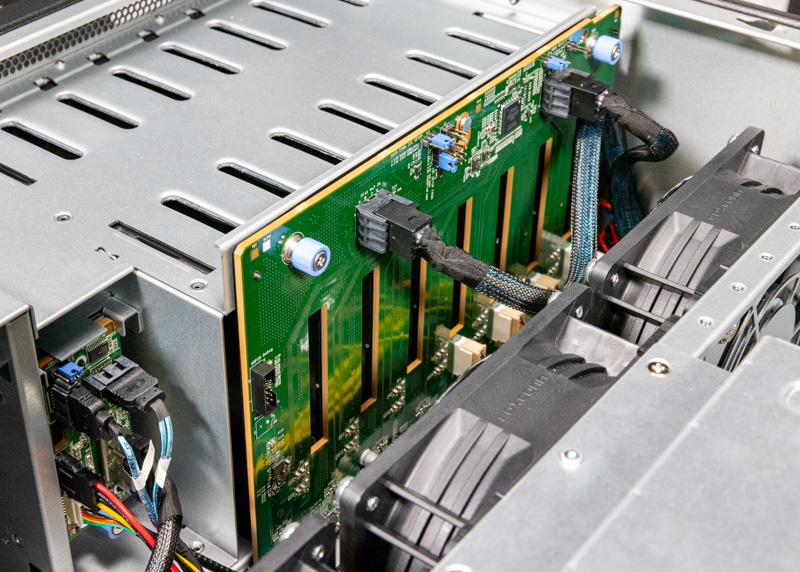
Another big front facing feature is the dual 2.5″ SATA/SAS/NVMe bay. Here we have two 7-pin SATA connectors and then also a higher-density PCIe connection to provide capability for NVMe SSDs. Our sense is that most will use these slots for SSDs.
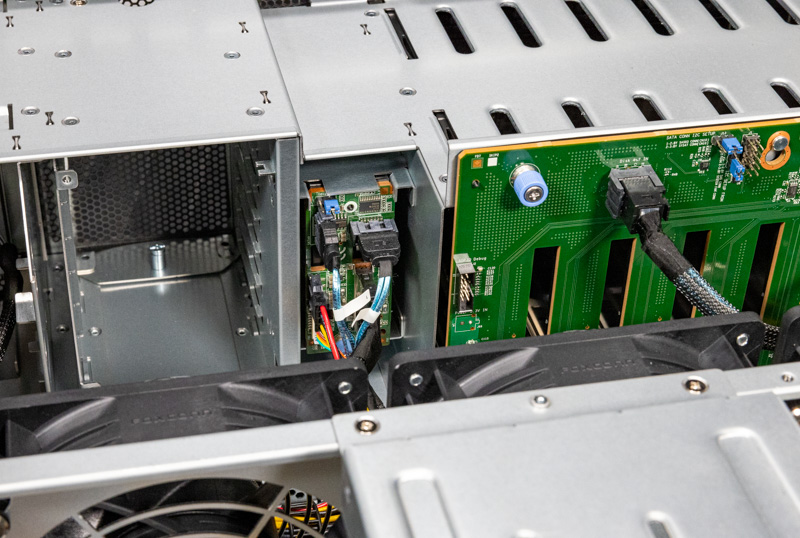
In the middle of the chassis, we have a fan partition. Tyan uses three 120mm x 38mm fans to push a lot of air through the system.
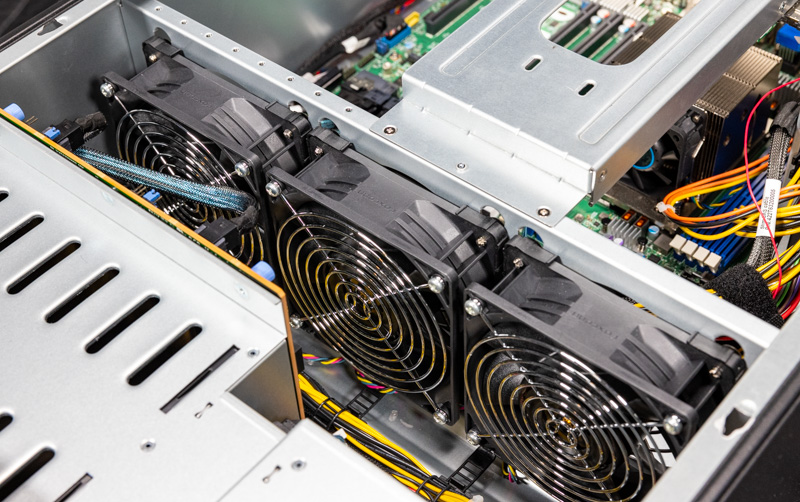
One can see the screw mounting tabs to help facilitate relatively quick swapping even though these are not in traditional hot-swap carriers.
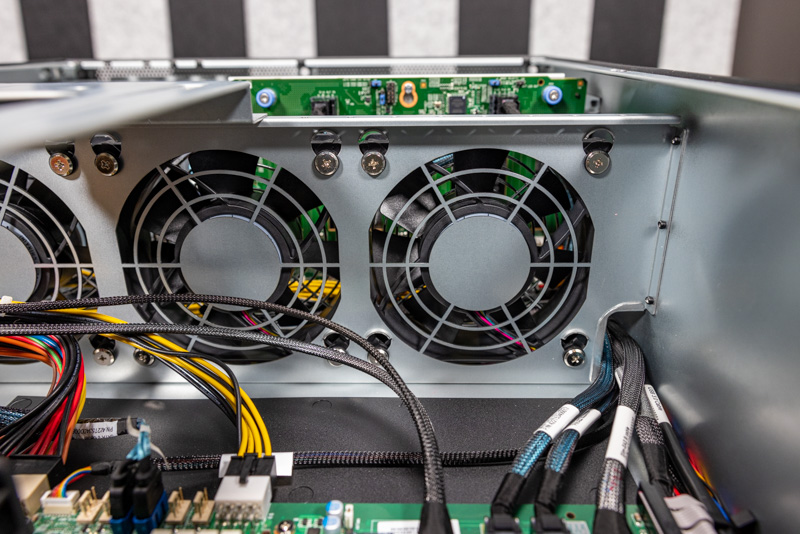
Behind that, we have the main motherboard and PSU section.
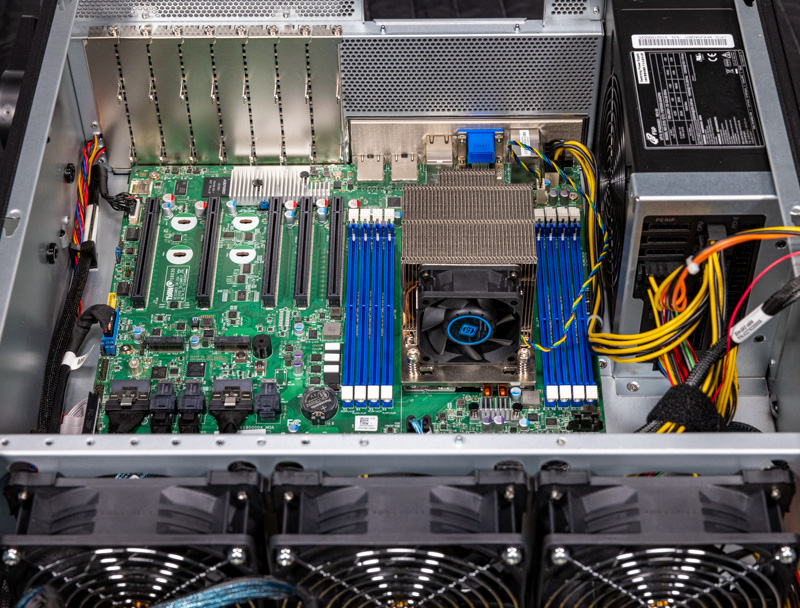
Here is the FSP 2kW power supply (at 200V-240V.) Tyan uses an 80Plus Platinum power supply. This PSU can also put out 1500W in the 115-200V input range and then 1200W in the 100-115V range. Most users are going to want this to be on 200V and higher otherwise that 1.5kW can be a challenge.
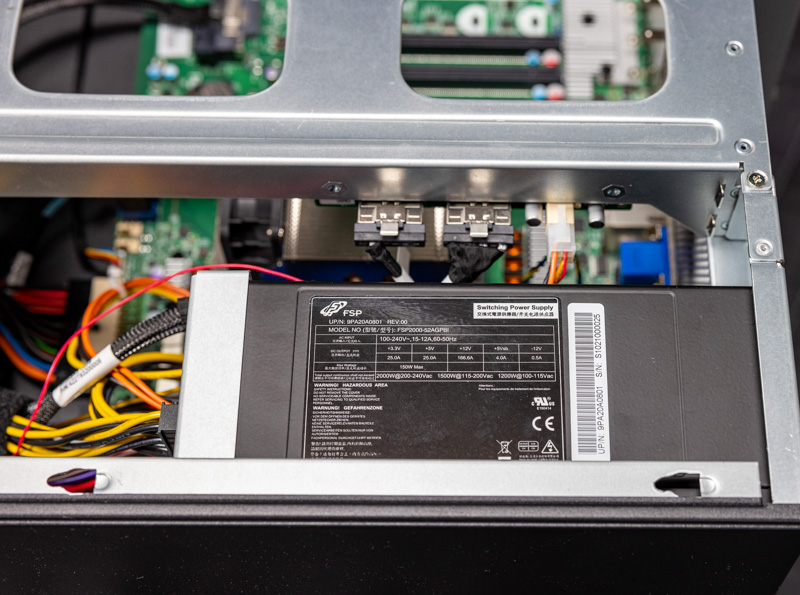
In terms of power supplies, something that is fun is that this is a modular power supply. This FSP solution almost looks like an enthusiast power supply given its modular nature and overall layout.
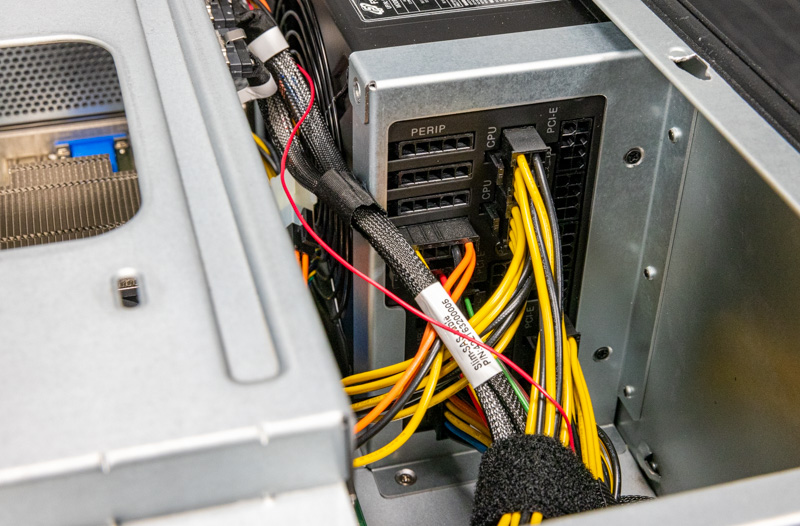
In terms of CPU, we get a single AMD EPYC 7002 (Rome) or EPYC 7003 (Milan) series CPU. AMD has enough PCIe lanes to power a large system like this from a single CPU socket. That is a key advantage in this type of system that would require two Intel Xeon CPUs to get enough PCIe connectivity. One interesting point here is that Tyan uses an active cooler here. Tyan says this is good for up to 280W. The system is not designed with redundant power and cooling so the single fan is what we may expect here. It also means we do not need elaborate airflow guides in the system.
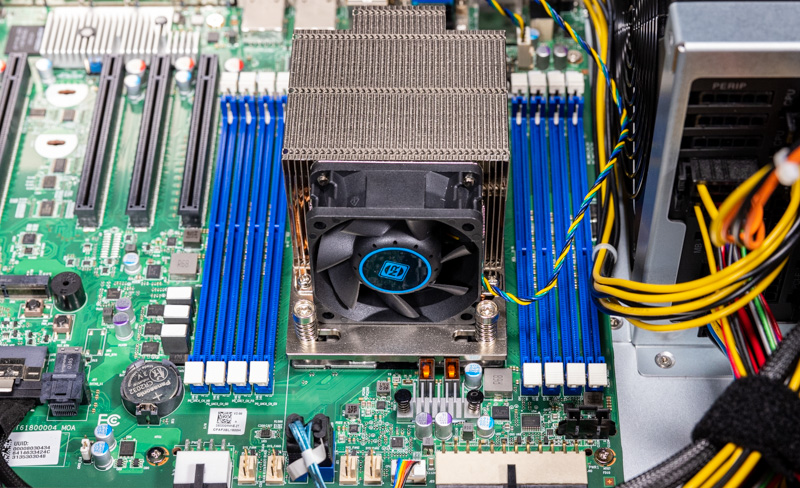
In terms of memory, we get eight DDR4-3200 DIMM slots. This is not the maximum that an AMD EPYC supports, but it is enough to fill all eight of the memory channels of a single AMD EPYC CPU.
During the external overview and in some of the photos in this internal overview, you may have seen a bracket over the CPU area. This bracket has two expansion slots at one end and a PCIe Gen4 x16 riser. Tyan is not limiting its system to the I/O on the motherboard. Instead, it is extending its PCIe fabric to the NVMe drives in the front and even this riser to take advantage of the extra space in the 4U chassis.
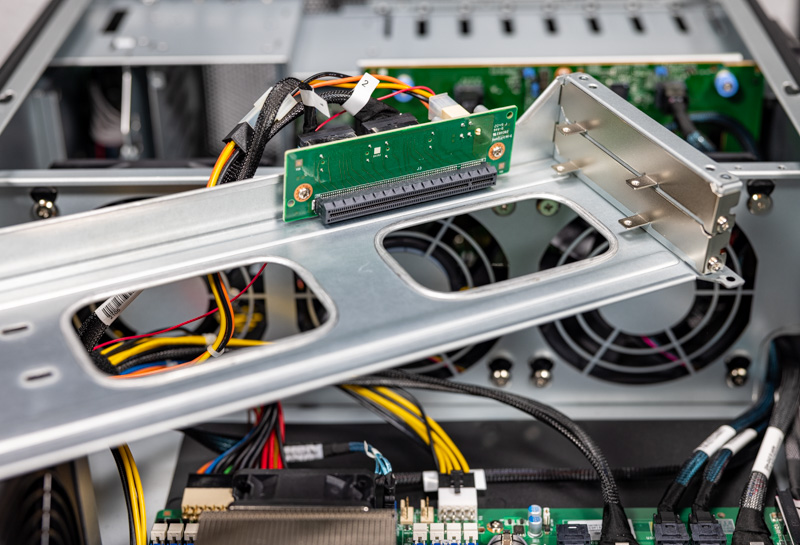
In terms of primary PCIe slots, there are five PCIe Gen4 x16 slots. Three of these slots are double-width with the bottom PCIe slot having a second I/O slot in the chassis for dual-slot GPUs and accelerators.
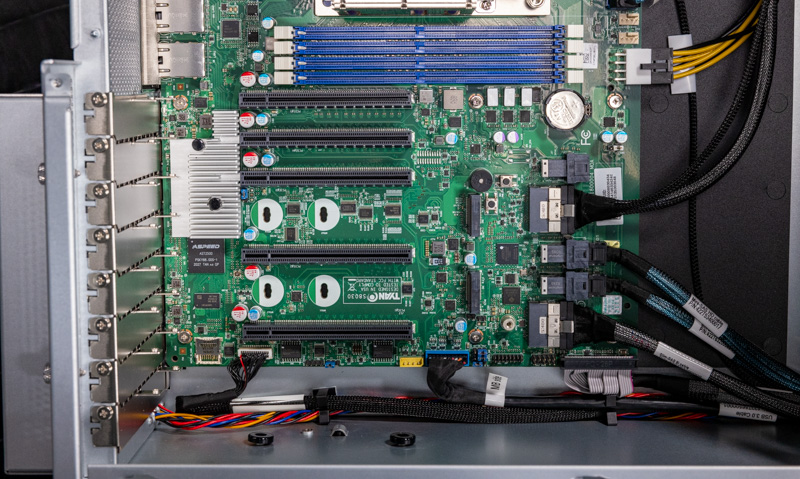
Tyan is still making use of space elsewhere. There are two M.2 SSD mounting points between these double-width PCIe slots. The other two x16 slots are single width but one could put a double-width accelerator on the top slot thereby blocking the bottom. There is certainly a lot of flexibility with this design.
Something that is interesting with this motherboard is that the connectors are almost all mounted horizontally to the motherboard plane. This includes the power connectors.
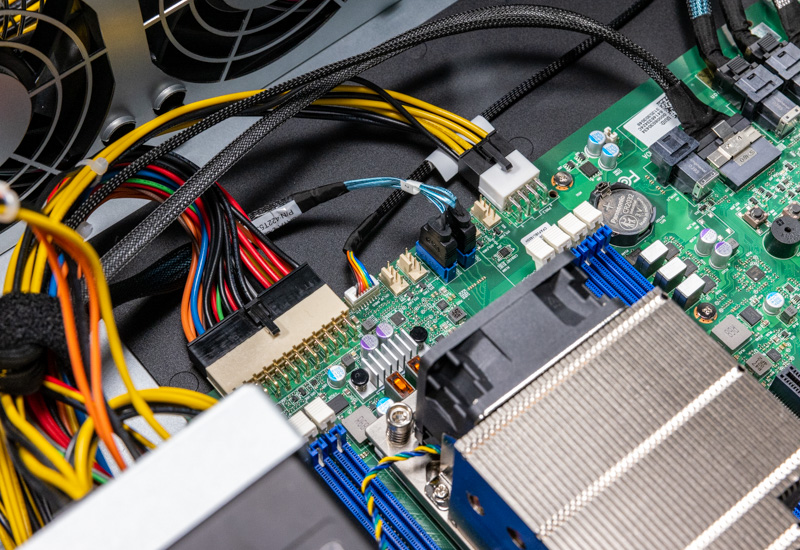
The PCIe and SATA connectors are mounted in this manner as well to aid in airflow.
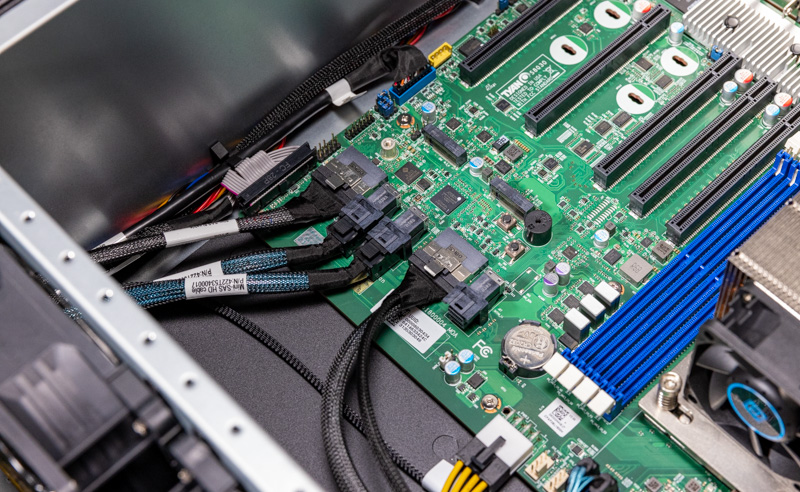
One other interesting item about this server is that since the rear of the server has the GPU fan box attached, there are solid blanks in the expansion slots. One of the more notable parts of these blanks is that they have the retention points to screw in cards. Many vendors just give you standard solid blanks.
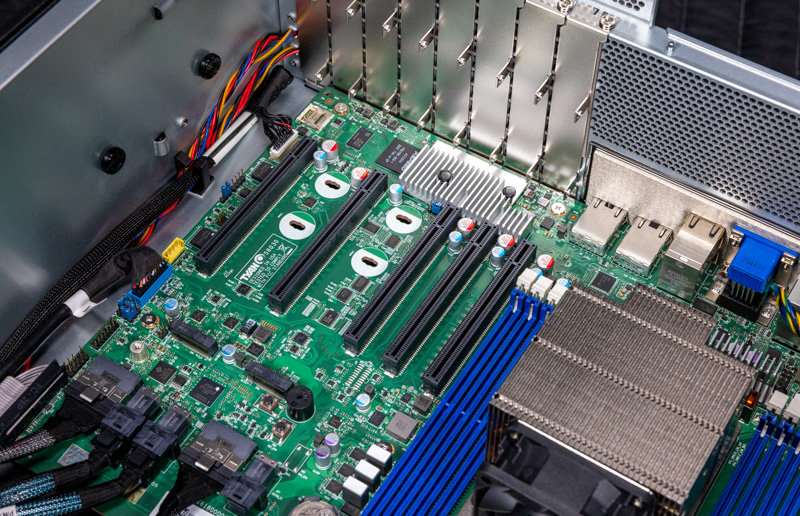
The silver heatsink cools the Intel X550-at2 10Gbase-T NIC. Underneath that one can see the ASPEED AST2500 BMC.
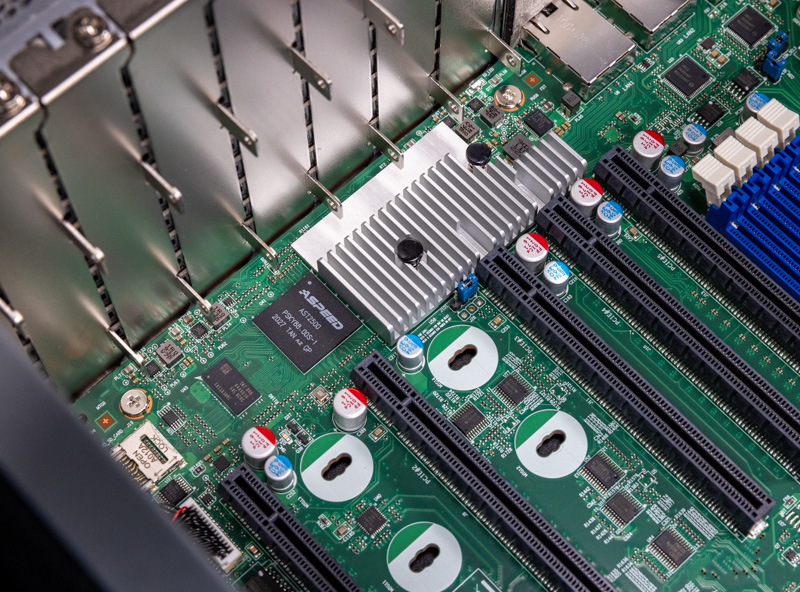
One small area to note is the PSU. The PSU is set up more like an enthusiast PSU so something a bit different is that there is a fan next to the CPU socket that is not aligned to the front to rear airflow. Still, with the big fans, and sitting on the cooler side of the chassis behind the CPU, this is not going to disrupt much airflow.
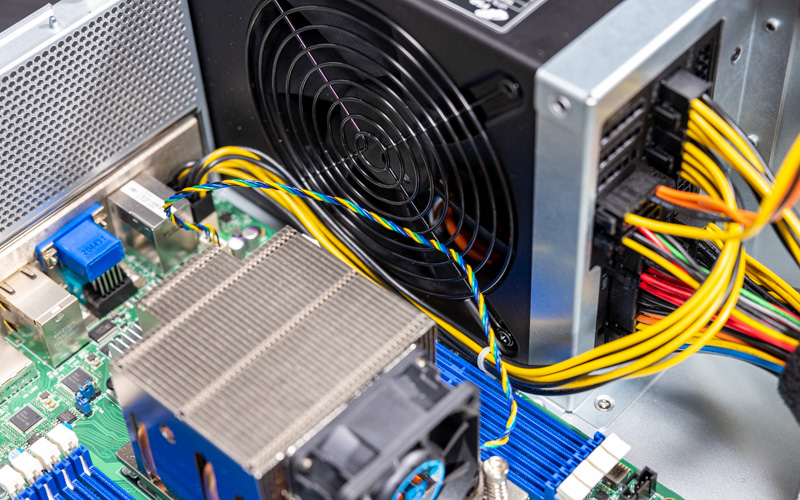
Overall, this is a really interesting system since it combines a standard motherboard into a 4U pedestal server form factor.
Next, let us get to the block diagram to see more about how this is all connected.




it is nice to see this workstation finally find some luv:
from the forums
Jul 15, 2021
never say never when it comes to this stuff! pm me for details: btw, it also supports milan!
1626401084474.png
how do you check in Bios whether the cpu has been locked by the vendor ??
i know you can take out cpu and put in other brand mainboard, but if you dont have other mainboard, how do you check vendor lock-in ??
and….nice feature…2 fans for pci-e slots
thanks for review
The case looks a lot like an enhanced Supermicro 743TQ.